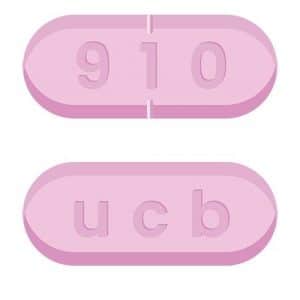People frequently have questions about what different drugs look like and how to identify them. One of their questions, in particular, is whether or not pink Lortab exists and if it’s still being offered. The following provides an overview of Lortab and what it looks like and also answers questions about pink Lortab.
What Does Lortab Look Like?
It can vary based on the manufacturer, but most Lortab is oblong in shape and is imprinted with its strength. Many of the tablets are also scored. Lortab tens are often yellow, which indicates this one of the strongest tablets.Sometimes you may find that a 5 mg tablet of Lortab is white with pink specks in it, but the all-over pink Lortab isn’t available anymore.
Pink Lortab Pill Identifer

Regardless of the strength of your Lortab or what the pills look like, it’s important to never take more than what you’re prescribed or to take it longer than you’re directed to by your doctor. Along with the dangers of overdosing on opioids, Lortab can also lead to overdose and liver damage because of its acetaminophen component. Even with the FDA limiting the amount of acetaminophen that could be included in Lortab, more than 3000 mg of acetaminophen per day can lead to serious adverse reactions or even death.
If you miss a Lortab dose, you’re advised to take it as soon as you remember and if it’s almost time for your next, you should skip the one you missed. People are warned never to take extra Lortab to make up for a dose they missed. In the event of a missed dose, also make sure to notify your pharmacist.
Treatment Can Be Life Changing. Reach out today.
Whether you are struggling with addiction, mental health or both, our expert team is here to guide you every step of the way. Don’t wait— reach out today to take the first step toward taking control of your life.
What Is Lortab?
Lortab is a Schedule II controlled substance by the DEA, meaning it’s available only by prescription. Lortab contains different active ingredients. The first is hydrocodone, which is an opioid, and the second is acetaminophen, which is found in over-the-counter pain and fever reducers like Tylenol.
In the past, Lortab was available in strengths starting at 2.5 mg and going up to 10 mg, in terms of the amount of hydrocodone in a dose. Then, the strengths began to be listed in the following format: 2.5 mg/500. The first number, as mentioned, referred to the amount of the opioid component in a dose, while the second number referred to the amount of acetaminophen.
A few years ago, the FDA started requiring that Lortab manufacturers cut down on the amount of acetaminophen in these painkillers because of the risk of liver damage and failure associated with this medicine. Now, the different Lortab strengths are:
- 2.5 mg/325
- 5 mg/325
- 7.5 mg/325
- 10 mg/325
Signs of an Acetaminophen Overdose
Whether you’re taking white Lortab, or the white and pink Lortab with speckles, you should be cognizant of your intake of acetaminophen. Some of theinitial signs of acetaminophen overdosecan include nausea, vomiting, loss of appetite, stomach pain, confusion, weakness or sweating. Eventually, if you take too much Lortab and overdose on acetaminophen,additional symptomscan include extreme drowsiness, pinpoint pupils,muscle weakness, weak pulse, skin that feels cold and clammyand shallow breathing.
When you’re taking Lortab, it’s important to avoiddrinking alcoholbecause this can increase the chances of liver damage occurring. It’s also important to avoid taking certain products that may also contain acetaminophen. Be sure to discussany and all other medications you’re taking with your doctor, even if they’re over-the-counter.
In terms of an opioid overdose, this can occur not only if you take too much Lortab, but if you combine it with other drugs thatalso slowyour central nervous system. This can include other narcotic opioid pain medicines, sedatives, muscle relaxers or antidepressants.








